Pastures and rangelands are the backbone of Nebraska's beef industry, providing essential forage for livestock. However, the presence of weeds can significantly diminish both the quality and quantity of forage available, impacting herd health and productivity. Invasive species, in particular, pose a formidable challenge, requiring proactive management strategies to mitigate their spread and detrimental effects. This article aims to explore effective methods for controlling weeds in pastures and rangelands, focusing on new invasive species to look out for.
Importance of Weed Control
Weeds compete with desirable forage species for essential resources such as water, nutrients, and sunlight, leading to reduced available forage for livestock. Additionally, some weeds are toxic to livestock or may decrease the palatability of forage, leading to reduced grazing efficiency. Effective weed control is essential to sustaining healthy pastures and maximizing forage production.
Identification of Invasive Species
Old World Bluestems: Old World bluestems, including species like Caucasian (Bothriochloa bladhii) and Yellow bluestem (Bothriochloa ischaemum), are aggressive, warm-season perennial grass invaders that can quickly dominate pastures and rangelands. They outcompete native grasses, reducing biodiversity and forage quality. These plants have a finer stem than native bluestems and different seedheads. Yellow has a fanlike seed head with yellow stems below nodes while Caucasian’s seedhead is somewhat Christmas-tree-like in appearance. The first indication of a problem is a grass your cattle will not touch. Also, invasion usually begins around stock tanks.
Location: Caucasian bluestem seems to be more common in southeast Nebraska with one county in the northeast. Yellow bluestem is in the southeast too, but it can be found in counties along I-80 all the way to the Colorado border and as far north as Sioux County in the panhandle. There are no known specimens from the Sandhills.
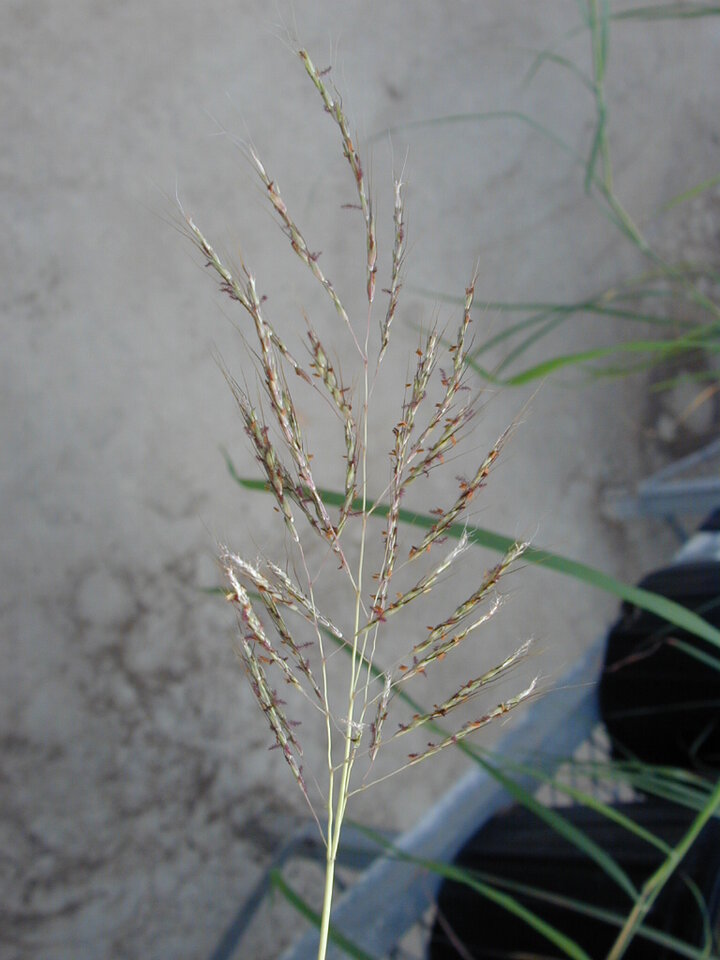
Caucasian bluestem. Photo by Cheryl Dunn.
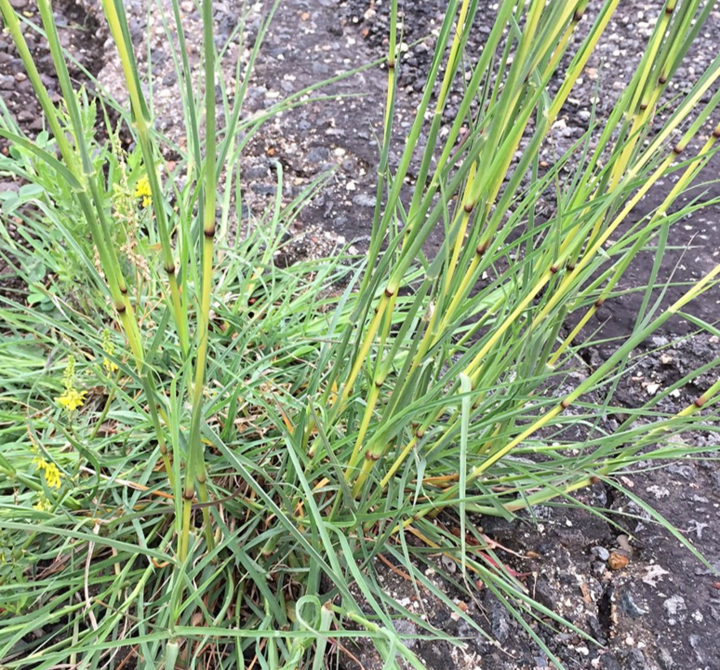
Caucasian bluestem. Photo by Karen Hickman.

Yellow bluestem. Photo by Cheryl Dunn.
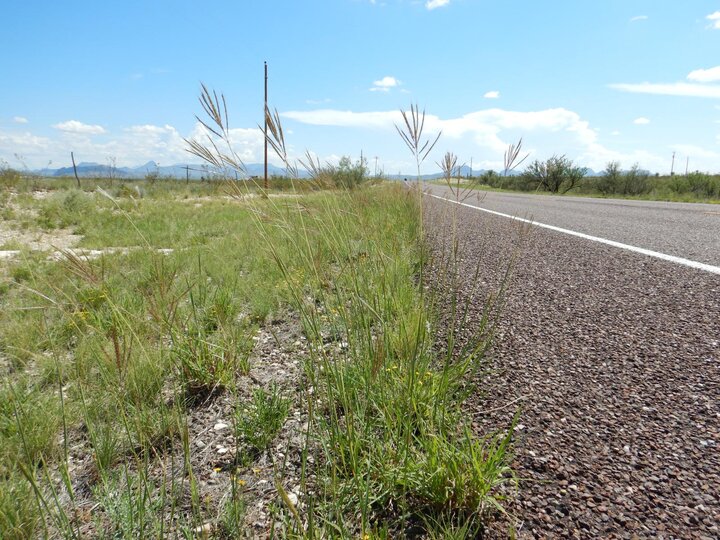
Yellow bluestem. Photo by Matt Lavin.
Sickleweed (Falcaria vulgaris), is a 1-3 feet tall biennial or perennial plant flowering from July to September with a solid stem, and distinctive sickle-shaped leaflets with white serrations along the edges. It is in the same plant family as dill, poison hemlock, Queen Anne’s lace, and water hemlock. It competes with crops and native plants, potentially reducing agricultural and forage yields. It thrives in most habitats from dry prairies to meadows and road ditches.
Location: More eastern Nebraska, however, in the last two years it has been found in north-central Nebraska

Sickleweed. F. Fornax, Bugwood.org
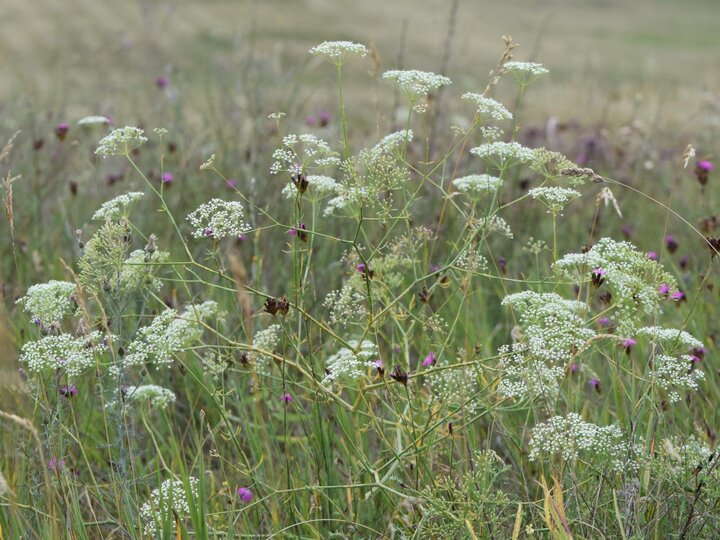
Sickleweed. Photo from Wikimedia Commons.
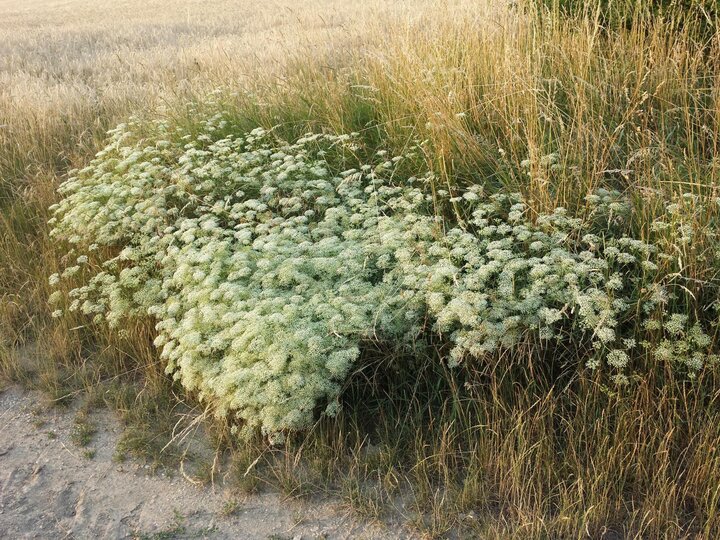
Sickleweed. Photo from Wikimedia Commons.

Sickleweed. Photo from Wikimedia Commons.
Houndstongue (Cynoglossum officinale), is an up to 2 feet tall biennial that flowers from May to July and is characterized by its brick-red to purplish-red flowers, coarse, hairy leaves, and bur-like seeds. The seeds can cling to livestock, reducing their market value and spreading the weed to new areas. It is toxic to livestock if ingested and poisoning usually occurs when hay is contaminated
Location: Increasing in the panhandle but has been found in the north-central and southeastern part of the state.
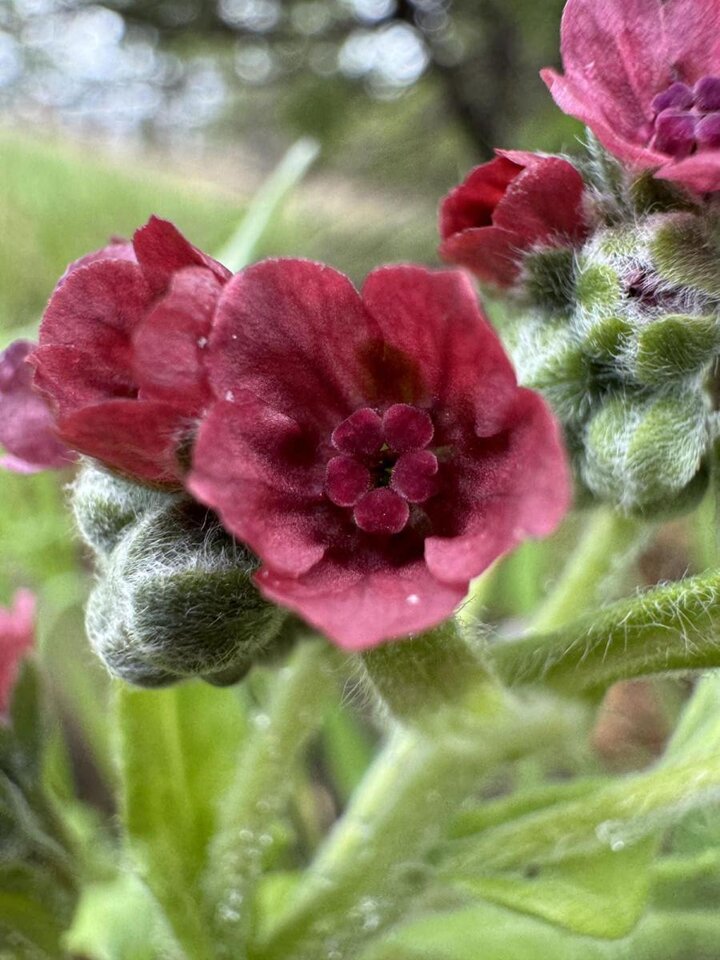
Houndstongue. Photo by Drew Granville.

Houndstongue. Photo by Drew Granville.
Absinth Wormwood (Artemisia absinthium), is an introduced perennial herb or subshrub growing up to 3.5 feet tall, characterized by a strong odor and silvery, highly dissected foliage. Some natives are similar, but their leaves are usually smaller and more highly dissected. Flowering occurs from June to September, with prolific seed production of up to 50,000 seeds per stem. It can dominate pastures and rangelands, reducing the availability of desirable forage species. Additionally, it contains the substance thujone, which can cause livestock to exhibit symptoms resembling epilepsy.
Location: Past distribution was concentrated around sandbars on the Missouri River in the northeast; however, contaminated hay has spread it across the state over the last 5 years, particularly the central portion.
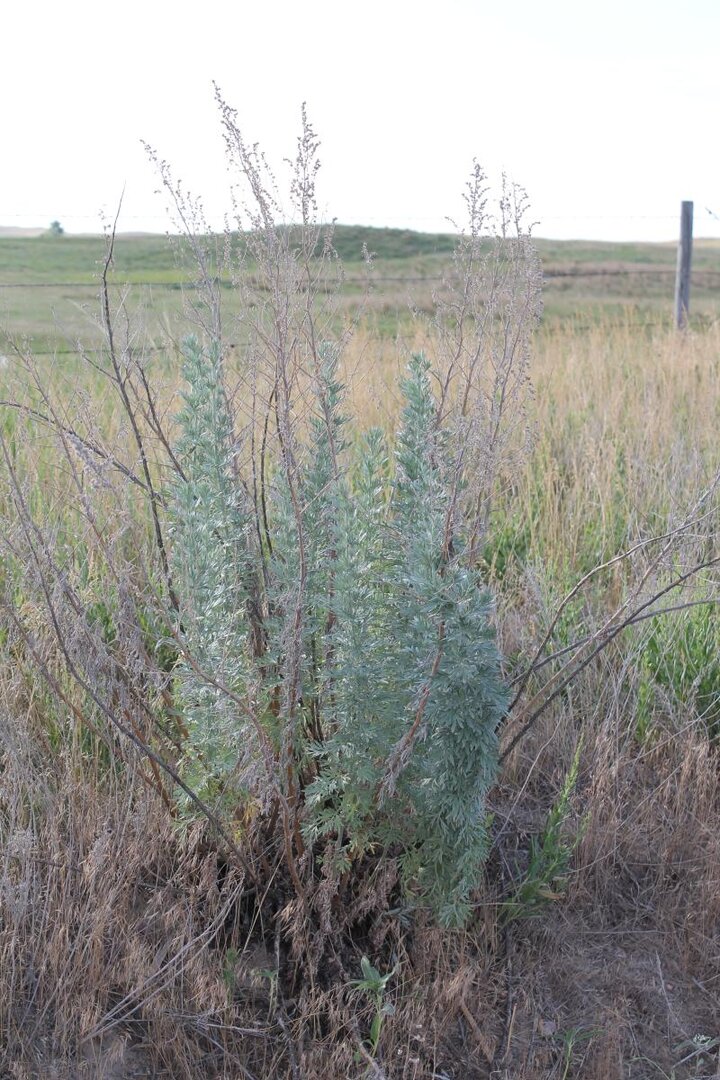
Absinth wormwood. Photo by Bethany Johnston.
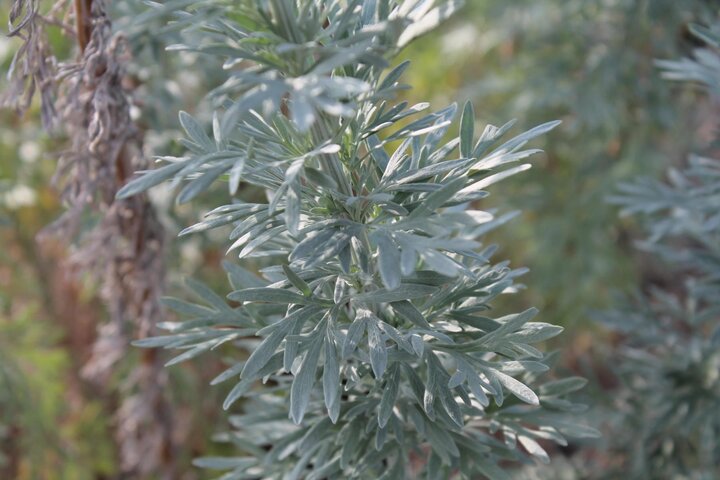
Absinth wormwood. Photo by Bethany Johnston.
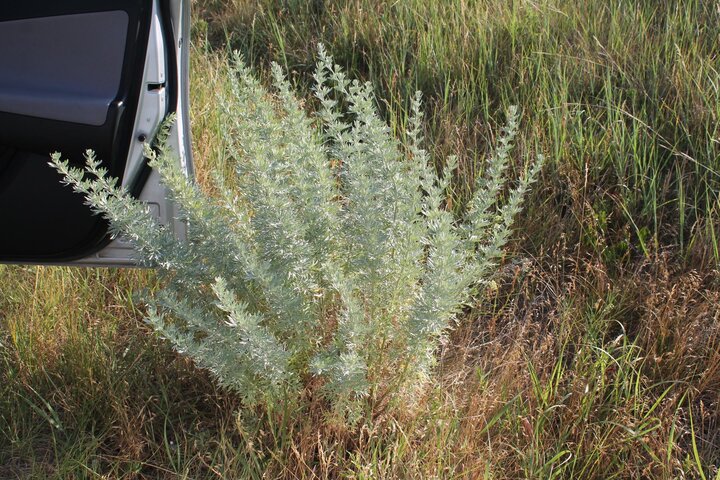
Absinth wormwood. Photo by Bethany Johnston.
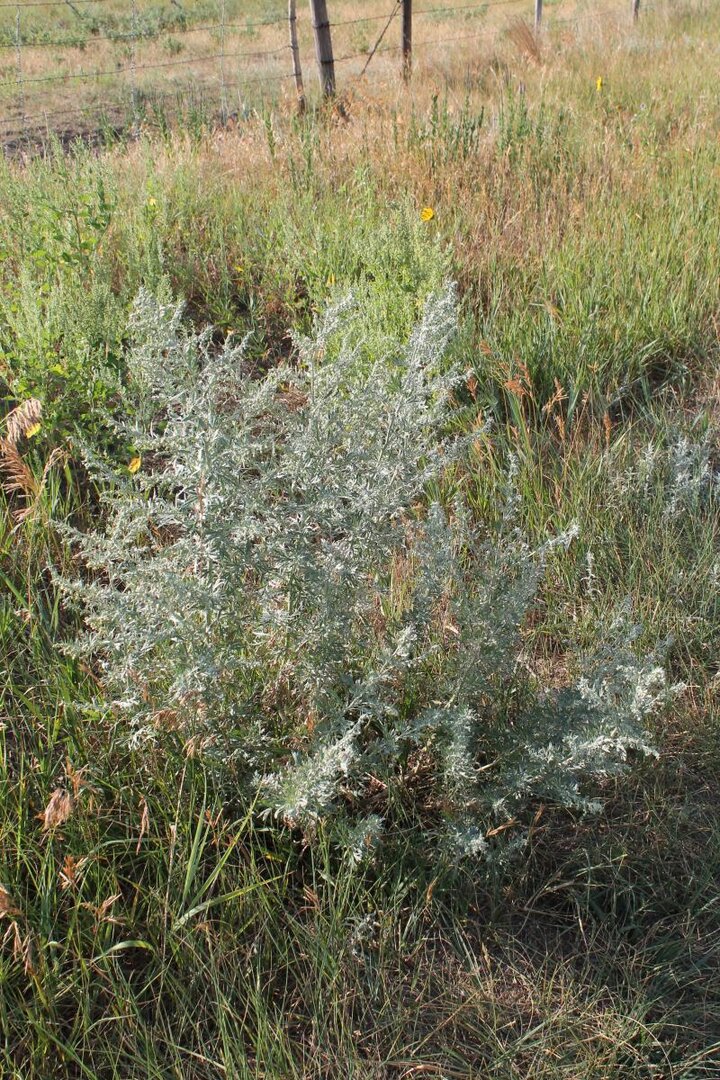
Absinth wormwood. Photo by Bethany Johnston.
Sericea Lespedeza (Lespedeza cuneata), is an introduced perennial legume that can grow up to 6.5 feet tall and flowers from July to October. Originally introduced for forage and erosion control, it has become invasive and noxious. Its high tannin content reduces pasture quality and hinders livestock grazing. Sericea is generally easy to recognize by its hairy ridges along the stem and wedge-shaped leaflets. Its extensive rhizomes are what make this plant very difficult to control and can be found in many habitats in well-drained soils.
Location: Primarily found in the southeast portion of the state and Nance County, but likely to be found elsewhere in the state. In the last 10 years it has spread west and now can be found in southern South Dakota and Colorado, but there are no other locations in the rest of the state.
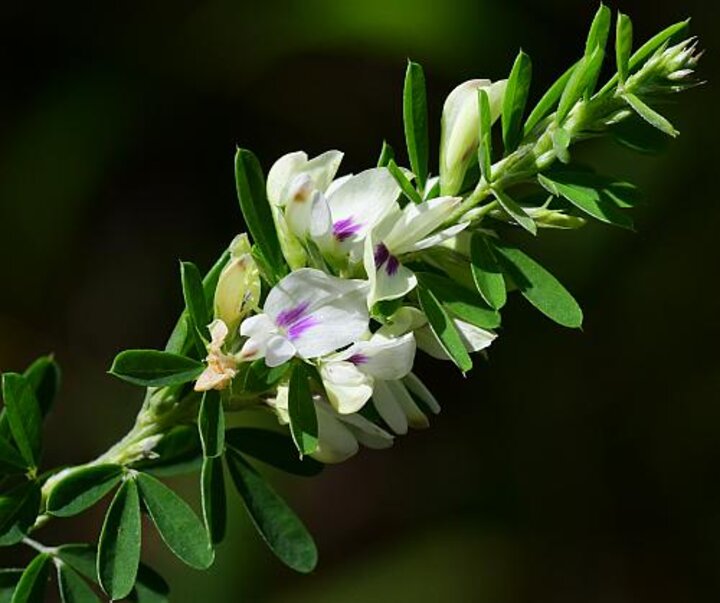
Sericea lespedeza. Photo by SR Turner, missouriplants.com.
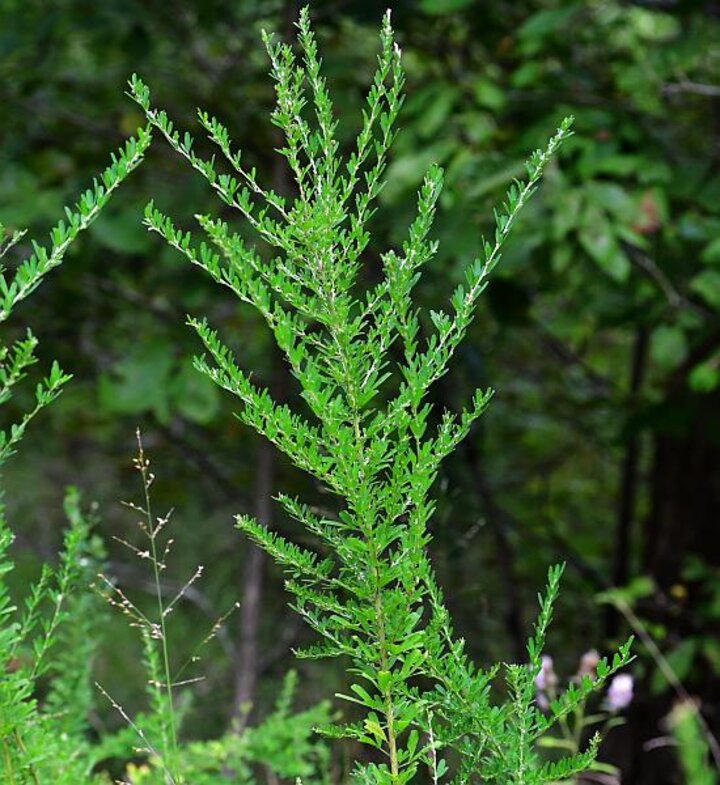
Sericea lespedeza. Photo by SR Turner, missouriplants.com.
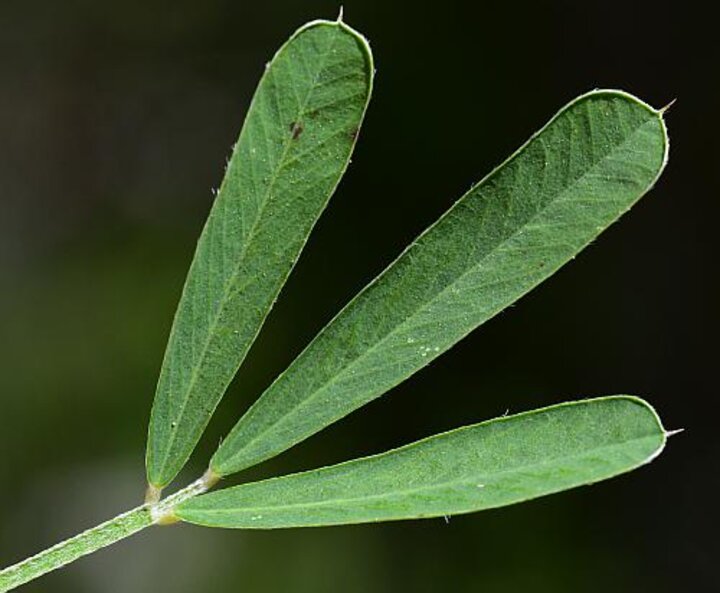
Sericea lespedeza. Photo by SR Turner, missouriplants.com.
Toadflax, including both yellow toadflax (Linaria vulgaris) and dalmatian toadflax (Linaria dalmatica), are escaped ornamental plants introduced in the mid to late-1800s. Both species are perennial with bright yellow, cultivated snapdragon-like flowers. They typically bloom from May to September. Yellow toadflax grows 1-3 feet tall and features narrow, lance-shaped leaves. Dalmatian toadflax on the other hand is a more robust plant up to 4 feet tall and broader, heart-shaped leaves that clasp the stem, and a larger flower. Both species are found in open, disturbed sites like roadsides, waste areas, field edges and pastures. Yellow toadflax is more adapted to moister soils while Dalmatian prefers drier well-drained sites. Toadflax spreads both by seeds and creeping rhizomes, forming extensive colonies that can crowd out native plants and reduce biodiversity in infested areas. The plant's deep root system makes it particularly difficult to eradicate once established. Both plants produce a glycoside that is toxic to livestock; however, animals typically avoid grazing the plant, so poisoning is rare.
Location: Yellow toadflax is found throughout the state but is largely absent from the Sandhills. Dalmatian toadflax was concentrated in the panhandle with Pierce being the only county eastward. However, it is now spreading south and east with the latest colonies being found in Perkins and Holt counties.

Dalmation toadflax. Photo by SR Turner, missouriplants.com.
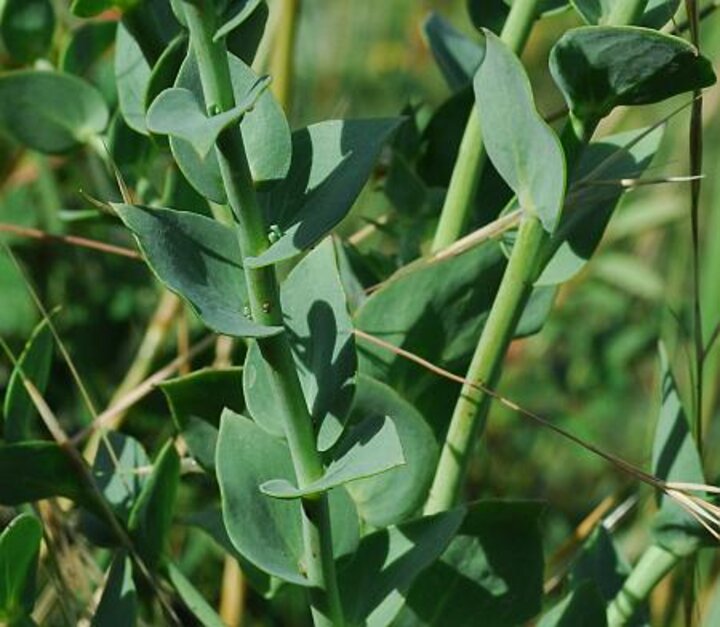
Dalmation toadflax. Photo by SR Turner, missouriplants.com.
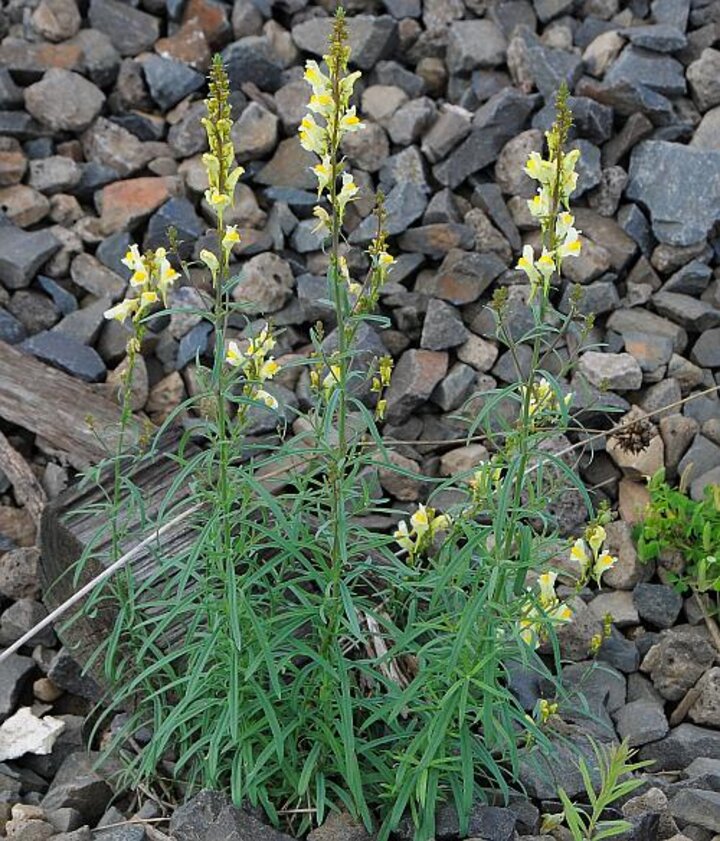
Yellow toadflax. Photo by Photo by SR Turner, missouriplants.com.
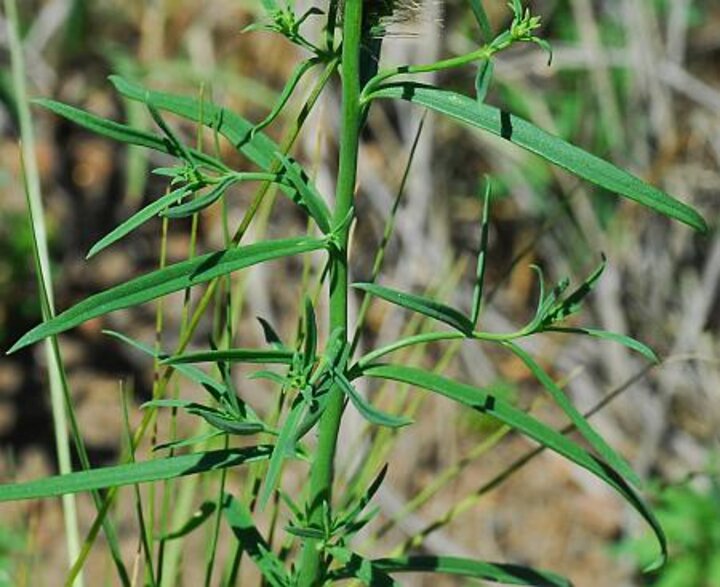
Yellow toadflax. Photo by SR Turner, missouriplants.com.
Integrated Weed Management Strategies
Controlling tough plants like invasive weeds often takes multiple approaches to get control of a situation. Often several different approaches are more effective than using the same approach repeatedly. By knowing the species we want to address, we can determine how it grows and what steps we can then take to control it.
Cultural Control: Practices such as proper grazing management, maintaining healthy soil fertility, and promoting competitive desirable species can help suppress weed growth.
Mechanical Control: Mowing, hand-pulling, or cutting weeds before they produce seeds can prevent their spread and reduce their population.
Chemical Control: Selective herbicides can effectively target and control specific weed species while minimizing damage to desirable forage plants. It's essential to follow label instructions and consider factors such as timing and application method. Different growth timing and forms of plants mean the best time to use chemical control can vary from species to species. Having a positive ID and finding the ideal control time can save time and money. Extension Circular 150, 2019 Guide for Weed, Disease, and Insect Management in Nebraska is a great resource to get started with.
Biological Control: Introducing natural enemies of invasive weeds, such as insects or pathogens, can help reduce weed populations over time. However, this approach requires careful consideration to avoid unintended consequences and will not fully eradicate a population as the control vector needs some remaining host to maintain a presence.
Importance of Timely Action
Early detection and prompt action are critical for effectively managing invasive weeds. Regular monitoring of pastures and rangelands allows producers to identify weed infestations early and implement appropriate control measures before weeds become established and spread. Often weeds establish in areas where the pasture has been stressed, so overgrazed, flooded, drought stressed, or heavy traffic areas are good to keep an eye on. Another place to be mindful of is where hay may have been fed over the winter, especially if it was purchased or brought in from outside of your operation.
Conclusion
Controlling weeds in pastures and rangelands is essential for maintaining the health and productivity of Nebraska's beef industry. By understanding the characteristics of invasive species like old world bluestems, sickleweed, houndstongue, wormwood, sericea lespedeza, and toadflax, and employing integrated weed management strategies, producers can effectively manage weed populations and preserve the integrity of their grazing lands.
